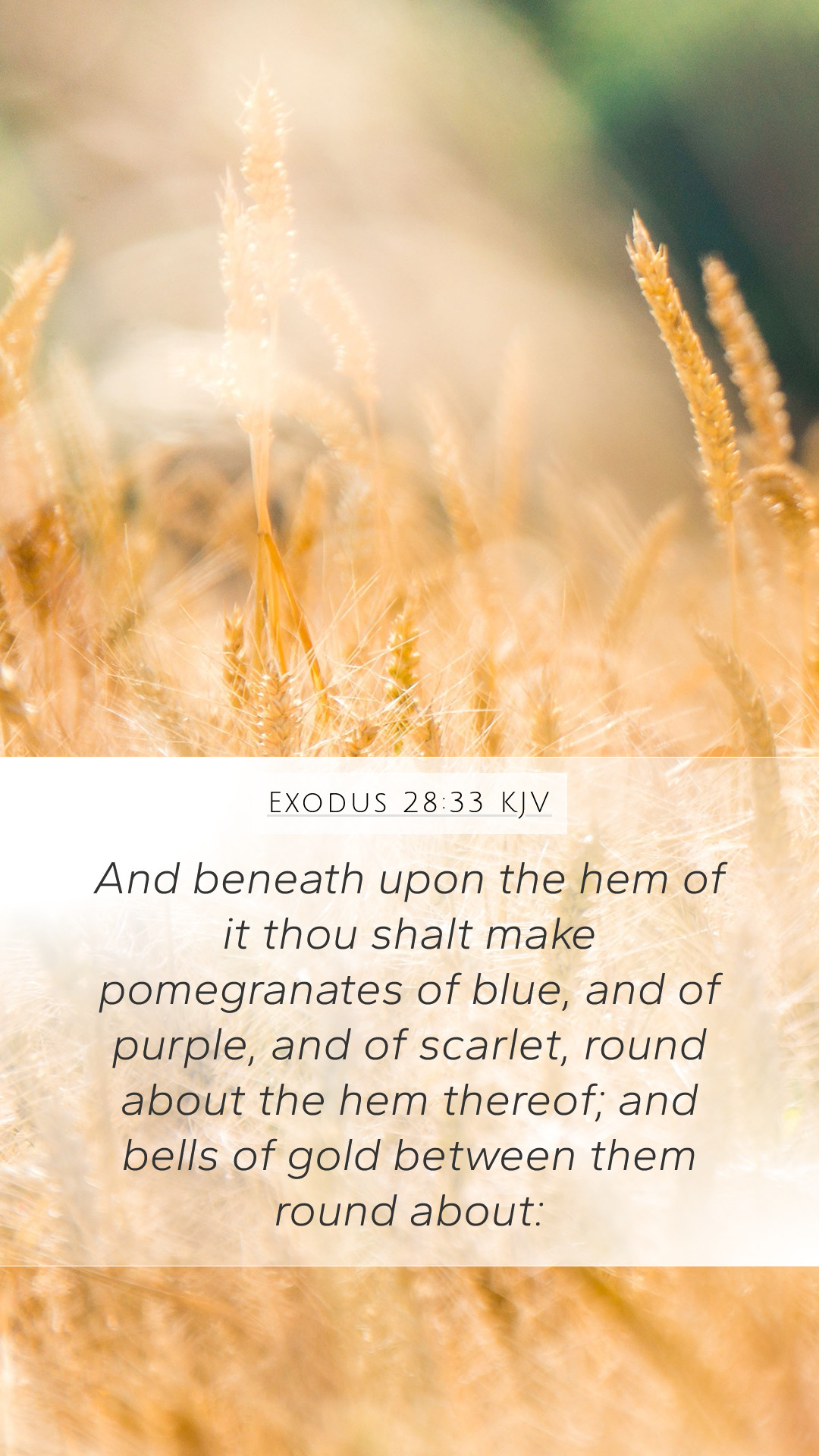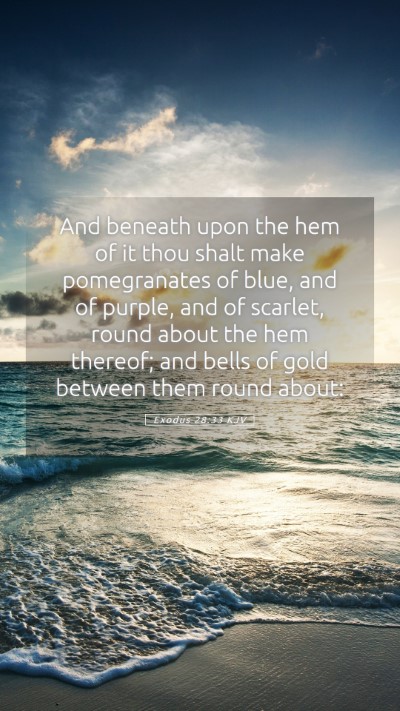Understanding Exodus 28:33
Exodus 28:33 states: “And beneath upon the hem of it thou shalt make pomegranates of blue, and of purple, and of scarlet, round about the hem thereof; and bells of gold between them round about.” This verse is part of the instructions given by God to Moses regarding the garments that the priests, particularly the high priest, were to wear. This specific detail regarding the bells and pomegranates illustrates both the symbolic and functional aspects of the high priest's attire.
Bells and Pomegranates: A Symbolic Interpretation
According to Matthew Henry's Commentary, the pomegranates symbolize the fruitfulness of the priestly ministry and the abundance of spiritual fruit that should come from obedience to God. The blue, purple, and scarlet colors represent royal and divine qualities, emphasizing that the high priest is an intermediary between God and the people.
Albert Barnes elaborates further on the use of bells, indicating they serve the practical purpose of alerting those outside of the holy place of the priest's movements. This can be viewed as a reminder of the need for reverence whenever approaching God, illustrating the holiness of His presence and the importance of the priest’s role.
Adam Clarke points out that the bells and pomegranates create a harmonious sound, symbolizing the joy and worship in approaching God. The sound of the bells signifies life and activity in the service of God, suggesting that worship should be vibrant and alive.
Historical Context
The context of these instructions is crucial for an accurate Bible verse interpretation. The garments of the priest not only served practical purposes but were also imbued with deep spiritual meaning. The high priest's attire was designed to bring honor to God and to signify the solemn responsibilities of the priesthood.
This section of Exodus falls under the broader theme of the establishment of the sacrificial system and worship within Israelite society. As Bible study insights suggest, understanding the historical context of these verses allows us to appreciate their significance in the framework of ancient Hebrew worship.
Spiritual Significance
- Representation of Christ: Many theologians see the elements of the high priest's garments as types or foreshadowings of Christ's role as our ultimate High Priest.
- Call to Holiness: The specific instructions emphasize that those who approach God must do so in ways consistent with His holiness, reflecting the need for purity in worship.
- Community and Worship: The bells allowed the people to be aware of the priest's presence, symbolizing the community's relationship with God through the priestly mediation.
Applications in Contemporary Worship
In applying the meaning of this Bible verse to modern contexts, we are reminded that worship should not become routine or lifeless. Just as the bells chimed to signal the high priest's duties, our approach to worship must be intentional, vibrant, and alive with the joy of serving God.
Furthermore, the concept of priesthood extends to all believers today, inviting us to reflect on how we can embody the characteristics of the high priest in our lives, promoting a fruitfulness that aligns with God’s teachings.
Related Bible Cross References
- Leviticus 8:6-9 - Discusses the inauguration of Aaron and his sons as priests.
- Hebrews 4:14-16 - Explores Jesus as the great high priest.
- Revelation 1:6 - Describes believers as a kingdom of priests.
This detailed analysis of Exodus 28:33 facilitates a deeper understanding of Scripture, highlights its significance, and serves as a rich resource for Bible study groups and individual study.


